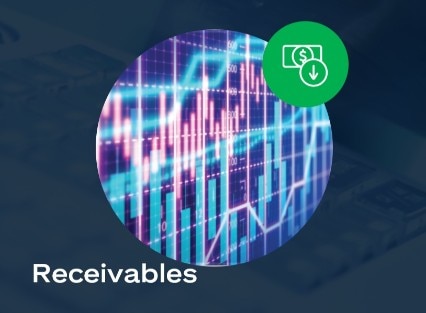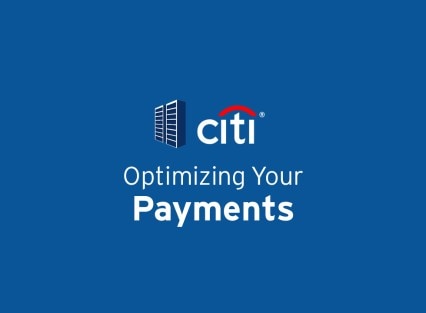As your company grows, you may need to reassess your approach to payments. A smart approach – such as utilizing standardized file formats or APIs depending on your needs – can transform bank connectivity, lower costs and support your operational objectives.

Payments are a key function for every business. But too often, decisions about payments are made in isolation rather than as part of a clearly defined strategy; efficiency is an afterthought.
A more deliberate approach to payments can cut costs, enhance visibility and control, and improve relationships with beneficiaries such as employees, suppliers or customers.
Each company’s needs and operational objectives differ; there’s no one-size fits all solution. Your goal should be to find the most efficient and cost-effective approach given your payment objectives and treasury resources.
Analyzing your payments
To find out if you have the right payments strategy, you first need to understand who you are paying, and how. This can be harder than it sounds.
Your bank should be able to help. Citi’s Client Relationship Insights tool can analyse your payments file every quarter, helping you to avoid costly cross-border payments and replace cheques with ACH payments, for instance.
Your bank may also have relationships with some of your beneficiaries and know their payment preferences. If you can switch a supplier to virtual card payments, you not only improve efficiency but also enhance working capital and benefit from potential rebates.
The right analytics can even identify dormant accounts – set up for a one-off tax payment, for example – so that they can be closed, eliminating any associated fees.
Follow the payments path… or leapfrog to APIs
Many companies follow the payments path outlined below, which delivers incremental benefits at every stage. But you can skip levels – or go straight to stage 5 – depending on your needs.
1. Online banking portal
A banking portal makes sense for a small company making a few payments each day. Payments are easy to manage, with beneficiary details stored for reuse.
2. Pre-formatted templates
Pre-formatted templates are perfect for companies with higher payment volumes because they eliminate some manual processes. Treasury staff can use existing information and simply change the value date or amount for new payments.
By cutting out some stages in the payments process, preformatted templates are especially helpful for companies that work with more than one bank and therefore have to log on and input transactions on multiple portals. Preformatted templates can also make it easier to reconcile payments using information from an ERP system and can help reduce processing/fraud risks.
3. Bulk payments using file formats such as CSV
Companies making higher volumes of payments or looking to eliminate more manual processes (and further enhance efficiency) can upload a bulk payments file straight from their TMS or ERP system to a bank via host-to-host connectivity.
4. XML ISO 20022
File formats vary by country and even between banks so while making bulk payments using CSV or other files types streamlines treasury processes, it doesn't eliminate fully manual intervention. XML ISO 20022 is a standardized file format developed to enable easy electronic data exchange between financial institutions. For companies seeking next-level efficiency, it overcomes many of the challenges associated with varying file formats. To get the full benefit of XML ISO 20022, your lead bank will need to arrange a harmonization meeting to ensure easy communication as banks have interpreted the standard in different ways.5. Application programming interfaces (APIs)
Once payments reach a significant volume – which can happen almost immediately for some new companies – it makes sense to streamline bank connectivity. APIs are small packets of code that connect two different systems seamlessly; they are at the heart of the apps we use on our phones.
When it comes to payments, they effectively put your bank’s capabilities inside your TMS or ERP system. That frees up treasury time – a single click can action a payment – and improves efficiency.
APIs facilitate 24/7 instant payments to customers, so they are perfect for sectors such as the gig economy where suppliers and workers expect to be paid immediately. APIs don’t require you to adapt your systems so implementation is faster. You still need to agree on standards with your banks but this can be done in a sandbox environment; you configure the API for your system based on a bank’s repository of functionality.
Given their benefits, a growing number of companies are using APIs for payments requests; the number of Citi’s institutional clients using them grew by 30% from Q1 2022 to Q1 2023 while the volume of payment requests initiated via APIs rose by 36%. (source: data from Citi’s Treasury and Trade Solutions division)
Working with the right bank
If you’re ready to take charge of your payment strategy – whether by making incremental improvements to your processes or leveraging the latest APIs – you need to ensure your bank is ready to support you.
Companies should choose to work with a bank that promotes and has the capability to deliver payment standardization. A bank that works closely with relevant regulators, organizations and companies to find the right solution. And a bank with a proven track record of delivering advances in bank connectivity and consistent investment in innovation.
Citi has a global network covering nearly 100 countries and direct membership of around 400 clearing systems. This means our payment capabilities are scalable and flexible, so we can respond to your changing needs quickly while providing a consistent service.



